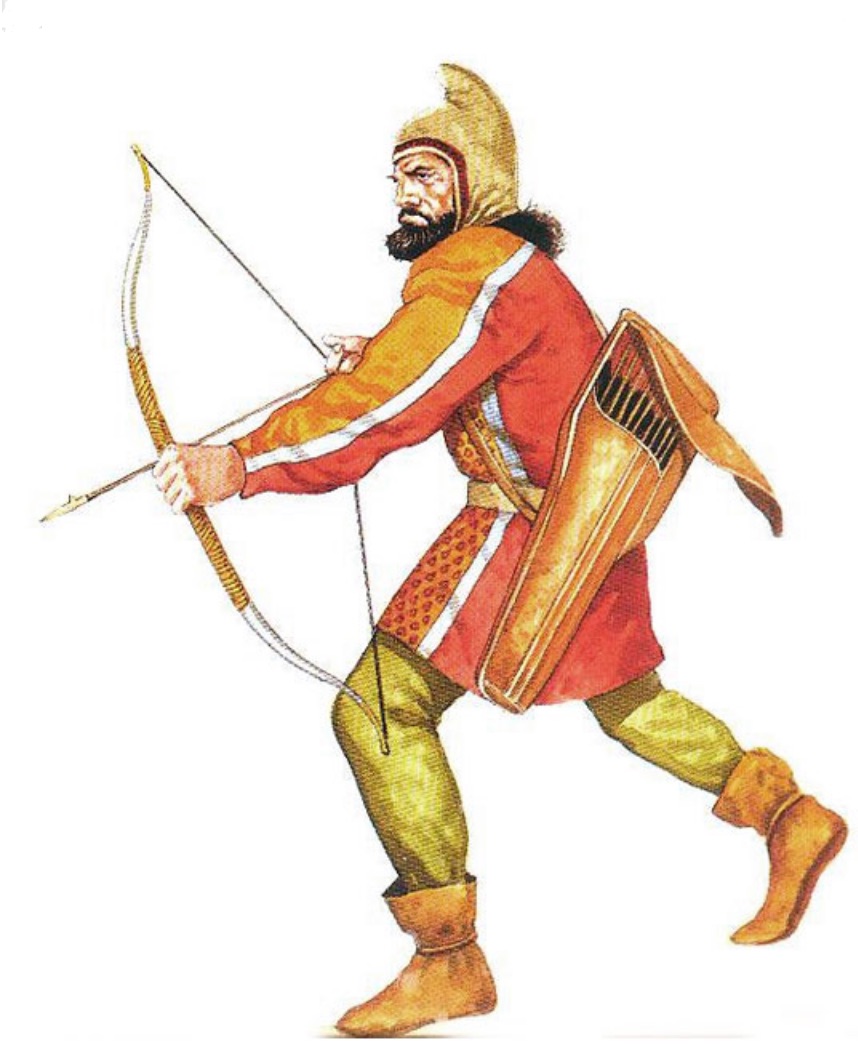The article “Iranian archer-soldier profile” was originally written in the Military History Monthly journal. The article posted below has been edited. Kindly note that the images and accompanying captions inserted below do not appear in the original version by the Military History Monthly journal.
= = = = = = = = = = = = = = = = = = = = = = = = = = = = = = = = = = = = = = = =
The Achaemenid Persian Empire was an amalgam of diverse states, tribes, and peoples. The power of the Great King was based on tribute payments and military conscription. Achaemenid armies, therefore, were polyglot affairs, each segment of the Empire sending its quota of men, dressed, equipped, and trained in the local fashion. The great majority were light-armed skirmishers – foot archers, javelin-men, or cavalry.

Exhibit of Achaemenid archers (Source: Ancient Origins).
Foot archers were an important element in Achaemenid and especially in later Sassanian armies. Often equipped with the combined quiver and bow-case, Achaemenid archers were be typically attired with the traditional Iranian tunic and trousers also worn by the cavalry: loose-fitting and often featuring elaborate woven and applied decorations. The distinctive Phrygian cap was often worn by ancient Iranian warriors in general.

Depiction of a Bactrian archer in Achaemenid service (Source: Pinterest & Elgran Capitan).
On the battlefield, the archers were often formed up in the centre of the army, several ranks deep. The vulnerable archers were protected by a barricade of large wicker shields and hedge of projecting spear-points along their front, such that any approaching enemy formation would face a relentless rain of tens of thousands of high-velocity arrows.
For defense, the archer would be equipped with the Akenakes-type short sword if caught by the enemy at close-quarters. But against the highly trained Greek Hoplites, specifically equipped for close-quarters combat, the lightly armed (and often lightly armored) archers would be at a significant disadvantage.

Achaemenid Achenakes. Note the lion and ram motifs, both symbols of ancient Iran (Copyright, Manouchehr Moshtagh Khorasani, Arms & Armor from Iran: The Bronze Age to the End of the Qajar Period , 2006).
While the Greeks relied on shock action, the Achaemenid armies did the opposite, adopting tactics designed to take full advantage of superior firepower and mobility. Massed archery was used to break up the enemy formation, while massed cavalry maneuvered to attack the flanks and attempt encirclement.

Achaemenid Archers in standard firing volley (Source: Head, D. (1992). The Achaemenid Persian Army. Stockport, England: Montvert Publications).
The Iranian plateau, the Persian heartland, was a region of peasant-farmers skilled in the use of the composite bow. This weapon, developed by Central Asian nomads in the mid 2nd millennium BC, had been used by Eastern archers for many centuries. The body of the bow was formed of horn and wood laminated together using animal resin. This was left to dry, allowing a bond to form, strong enough to withstand the immense pressures placed upon it when the bow was drawn. Sinews from animal tendons were then laminated to the outside face of the bow, imbuing it with explosive power. The composite bow was essentially a weapon that combined elasticity with strength.

Achaemenid Daric housed at the Cabinet des Médailles in Paris, France – this was struck in c. 330–300 BCE during the reign of Artaxerxes II (r. 404 to 358 BCE) – the above depicts the Achaemenid king wielding a bow (Source: Marie-Lan Nguyen in Public Domain).
Complex construction techniques and long drying-times meant that a bow might take up to 18 months to manufacture. Once complete, the unstrung bow would curve outwards. When strung, using a bowstring made from organic fibre or sinew, the ends of the bow were pulled inwards, such that tremendous power was already stored.

A recreation of Achaemenid archers in battle (Source: Wisgoon).
The result was a relatively short bow that had the power of a much longer wooden model. In modern tests, the composite bow has proved its accuracy and killing-power by piercing several layers of armor at ranges up to 180m.



